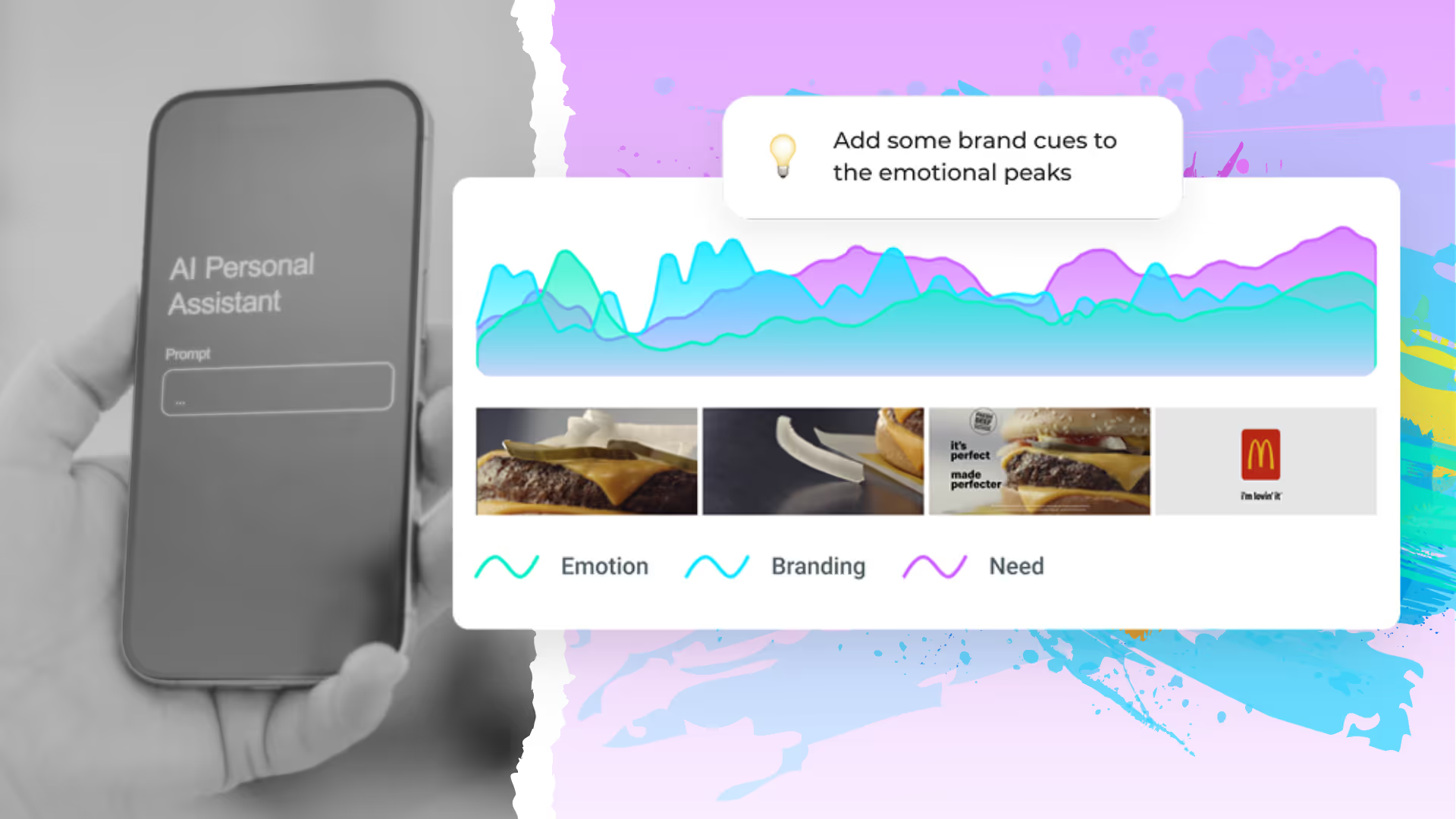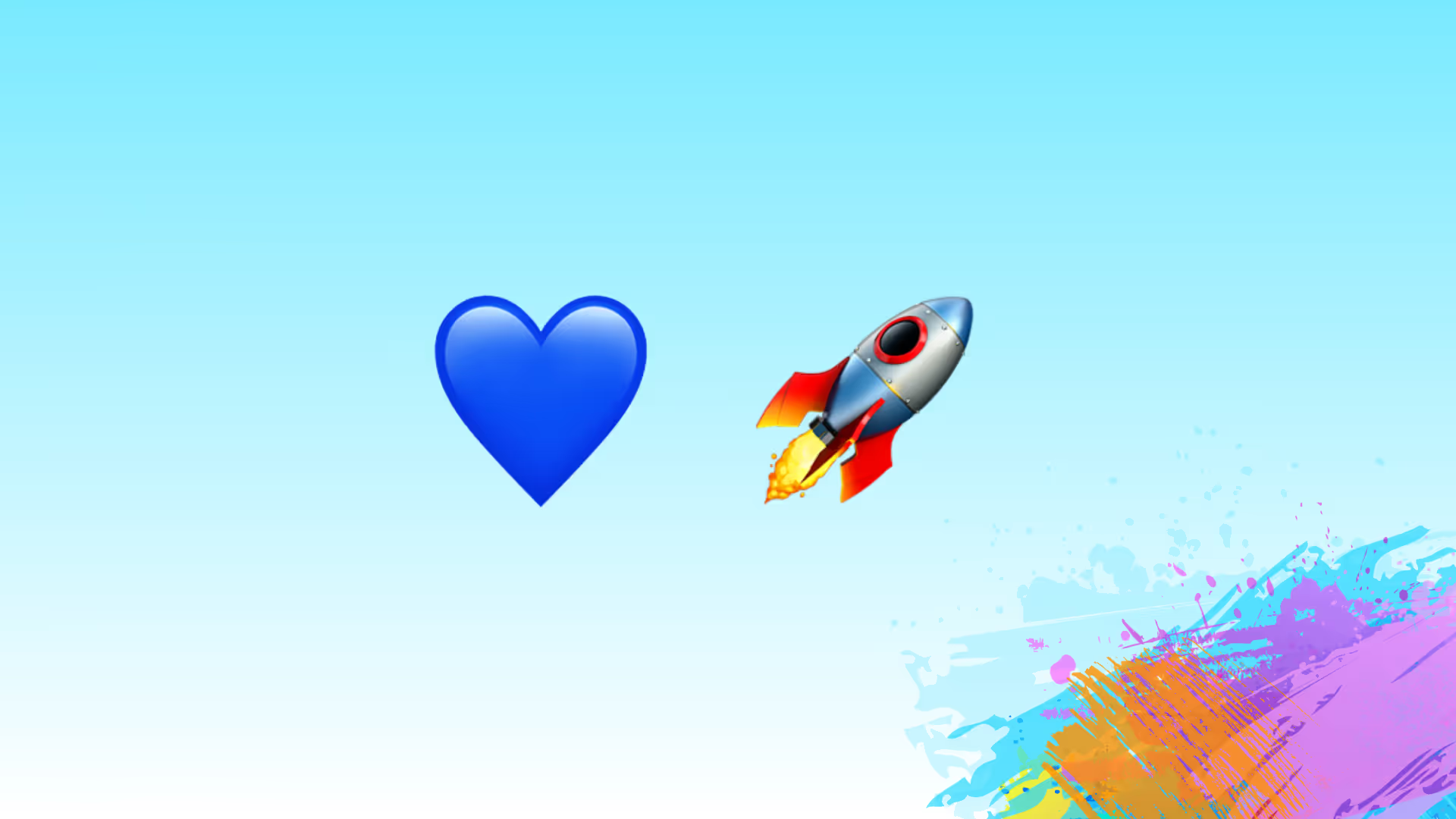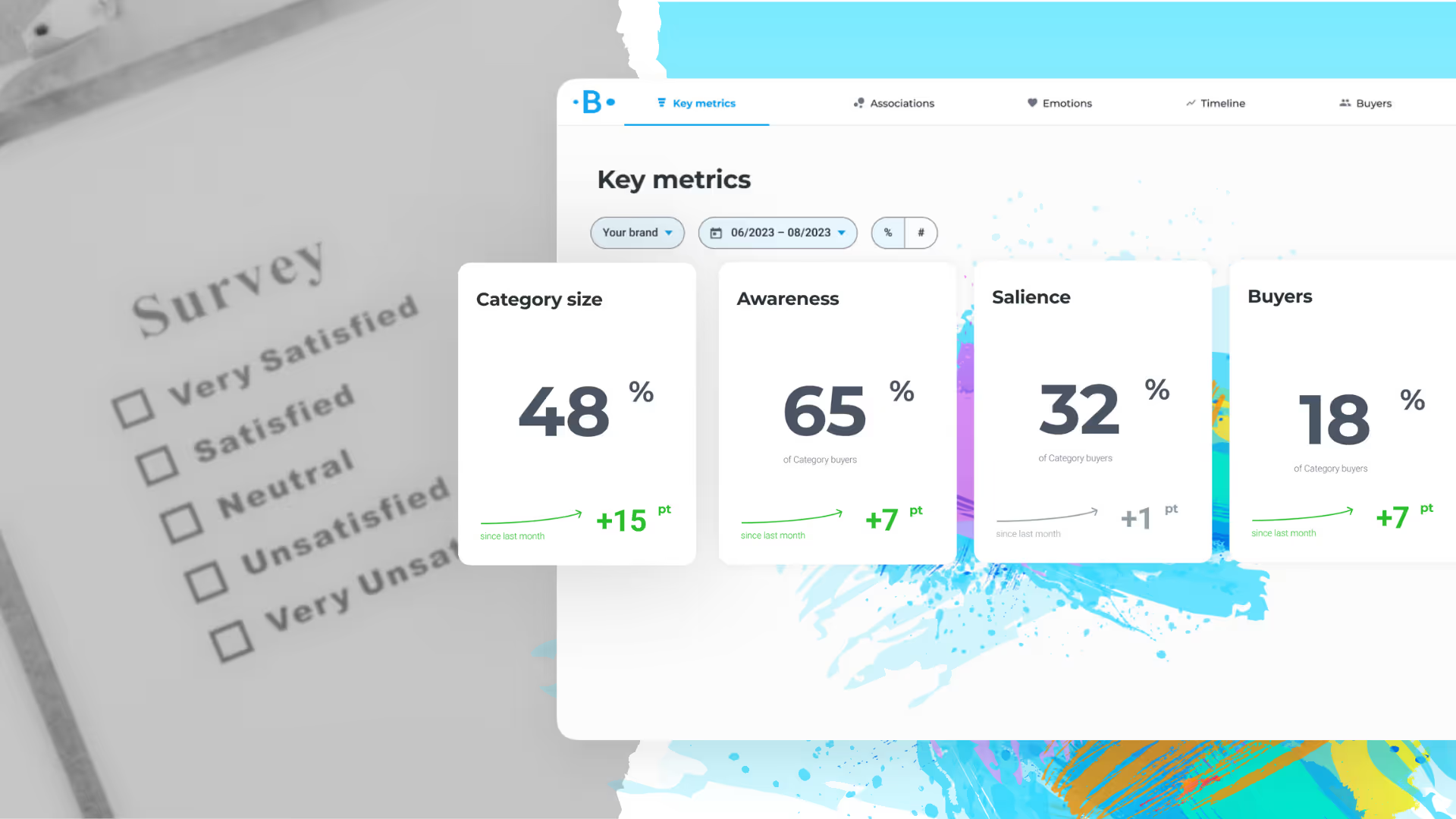We put these questions to the test using our new predictive attention heatmaps.
The goal: understand how attention and recall work together, and whether brand familiarity gives certain companies an advantage, even when everything else in the ad stays the same.
The experiment setup
The idea was simple: we took a generic stock photo and placed different fast-food company logos in the exact same spot across multiple versions.
To keep the test realistic, we used an image of a woman eating a burger—something you might see in an everyday food ad.
Faces are strong attention magnets, so this setup helped mimic how people naturally view content. It also created a more competitive visual environment, forcing the logos to vie for attention like they would in a real ad.
.avif)
Using our AI-powered heatmap model, trained on eye-tracking data from over 20,000 experiments, we measured how much attention each logo received.
The results
Surprisingly, the attention data looked nearly identical, whether it was McDonald’s or Popeyes. In other words, the amount of attention each logo attracted was essentially the same, regardless of brand size or fame.
.avif)
This showed us that heatmaps are helpful for spotting where people are looking—but attention alone doesn’t tell the full story.
Brand recall: size and familiarity matter
While attention was evenly distributed, brand recall told a different story. Even though all the logos were the same size and placed in the same position, some brands stuck in people’s memory more than others.
Here are the brand recall results (note: this test was conducted on a Czech audience, so brand familiarity may vary in other regions):
- McDonald’s – 52%
- KFC – 51%
- Popeyes – 40%
- Burger King – 38%
Larger, more recognizable brands had a clear edge. McDonald’s and KFC were recalled by over half of respondents, while Popeyes and Burger King lagged behind by about 10–14 percentage points. That’s a difference of roughly 30%—a significant gap, especially considering the visual treatment was identical.
This points to a key insight: bigger, more familiar brands stick better in memory—not because people spend more time looking at them, but because those brands are already deeply rooted in people’s minds.
Attention vs. brand recall: connected, but not equal
For big brands, attention and recall were strongly correlated—if people noticed them, they remembered them. But for smaller brands, even when they attracted the same amount of attention, recall was significantly lower. This highlights the power of brand familiarity when it comes to memory.
But there’s more: a second experiment revealed that smaller brands can narrow this recall gap by extending the duration of branding.
We tested how different lengths of brand exposure affected recall across brand sizes. Unsurprisingly, large brands benefited very little from additional branding time—their recall was high even at short exposures. But for small brands, the effect of longer branding was significant. Their recall steadily improved as branding time increased from 1 to 4 seconds.

👉 The takeaway? For smaller brands, longer branding isn’t just nice to have—it’s essential. Giving your logo more time on screen can meaningfully boost how well it sticks in people’s minds.
Final thoughts
Attention heatmaps are a valuable tool for understanding where people look—but they’re just one piece of the puzzle. Brand size, recognition, and context are critical in shaping whether people actually remember the brand.
These insights should help marketers design ads that don’t just capture attention, but also increase lasting brand recall.






.avif)










